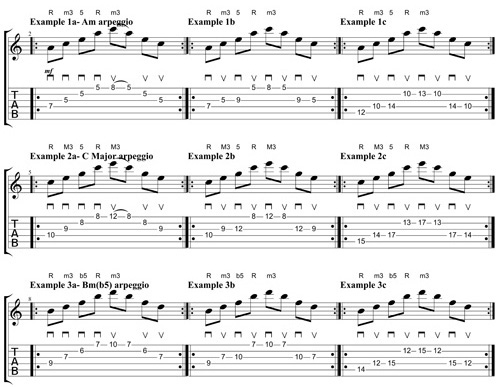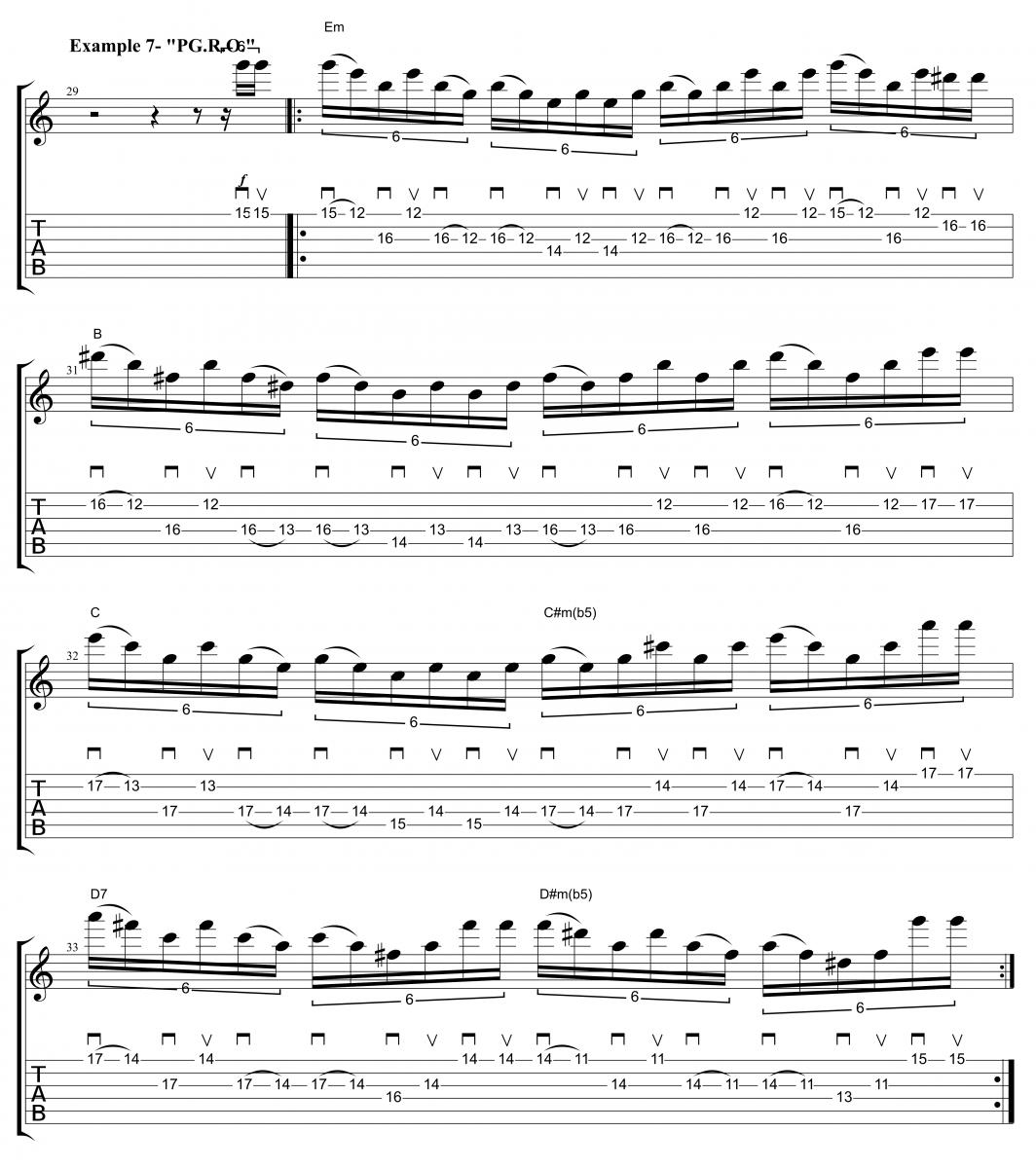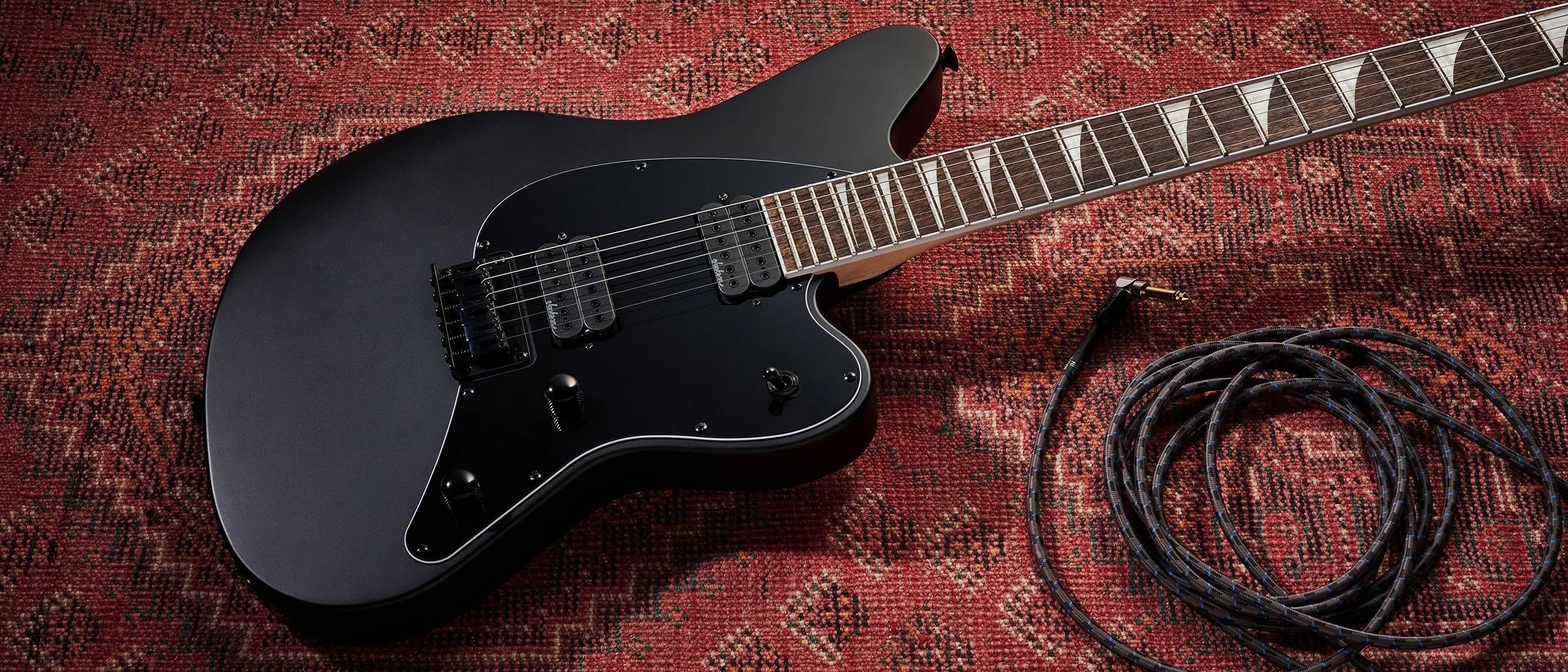Paul Gilbert-Style, Sequenced String-Skipping Arpeggios
Learn Paul Gilbert's efficient string-skipping arpeggios technique.

One of the especially cool things about a guitar is the fact that there are almost always at least a few ways to play the same notes.
This fact allows (and forces) us guitarists to explore the different possibilities available through experimentation with alternate fingerings, picking strategies and phrasing. Often, while there are many ways to play the exact same notes, there is usually a “magic” fingering and picking pattern that allows for the easiest and most effective execution of the phrase.
As an advocate of this “following the path of least resistance”-type of efficiency, guitar guru Paul Gilbert has come up with a great deal of influential ideas, but one of his most useful and technically streamlined is that of string skipping arpeggios. With this technique, instead of playing the common “finger-rolled barre” or similarly inefficient sweep picked arpeggio shape depicted in EXAMPLE1a, you would move the B string note to its equivalent on the G string and switch to alternate picking instead of sweep picking (EXAMPLES1b and 1c).
EXAMPLES2a-c and 3a-c show the major and minor flat 5 shapes, respectively.

Note that your roots are both the D string note and the index finger E string note, and that the pattern conveniently has an “outside” picking pattern with all of the down-strokes falling on the downbeats when alternate picking is used.
The efficiency of these shapes can be further enhanced by the use of convenient legato phrasing when adjacent notes are found on the same string. When performing the arpeggios this way, the right hand still moves as if it were alternate picking, simply moving rhythmically without making contact with the string when a note is phrased legato. This allows for a better physical connection with the groove through the down-picked downbeats, which gain a sharpened attack following the preceding unpicked upstrokes, while allowing the licks to be played easily and cleanly at accelerated speeds.EXAMPLE4 is a demonstration of the “up and down”-style arpeggios commonly heard in sweep-picking-type progressions, but the combination of the rhythmic picking and legato gives the lick a completely different feel. Pay close attention to the movement of your right hand in even 16th notes, regardless of whether the note being played is picked or not. Try this type of lick with your favorite progressions, moving the shapes (major, minor or minor b5) relative to the D or E string roots.

Another benefit of these shapes is their ability to be sequenced into many melodically and rhythmically interesting patterns that would be nearly impossible (and completely impractical) to perform via any other means.
Check out EXAMPLE5 for some ideas that should inspire you to master this concept and come up with your own permutations using your own progressions. Try practicing each bar as their own pattern and then combine both as a repeating pattern.

For a twist on this sequencing idea, check out EXAMPLE6, inspired by Nuno Bettencourt of Extreme (check out their Pornograffitti for some awesome guitar playing and tone). For those of you old enough, think Bill and Ted’s Excellent Adventure at the mall and you’ll get the idea.

Finally, EXAMPLE7 is my homage to Gilbert, featuring a Bach-inspired progression in a keyboard-esque (but much cooler on a distorted guitar!) sequence. Be aware of the slight fingering shift in bar3, C to C#m (b5), and the movement of the shape between the 14th and 11th positions in the 4th bar.

Use this technique with face-melting leads, but also look into the potential to use it as a clever, percussive rhythm guitar approach (especially when used with varying degrees of palm muting and dynamics). These shapes also sound great when synced up rhythmically with a digital delay, Gilmour/Edge-style.
Get down the patterns, focus and get some speed with them with proper physical movement, plan out a few sequences and progressions of your own, turn it up, then let go of yourself and feel the music. Happy shredding!
Scott Marano has dedicated his life to the study of the guitar, honing his chops at the Berklee College of Music under the tutelage of Jon Finn and Joe Stump and working as an accomplished guitarist, performer, songwriter and in-demand instructor. In 2007, Scott developed the Guitar Strength program to inspire and provide accelerated education to guitarists of all ages and in all styles through state-of-the-art private guitar lessons in his home state of Rhode Island and globally via Skype. Visit Scott and learn more at www.GuitarStrength.com.
Get The Pick Newsletter
All the latest guitar news, interviews, lessons, reviews, deals and more, direct to your inbox!
Scott Marano has dedicated his life to the study of the guitar, honing his chops at the Berklee College of Music under the tutelage of Jon Finn and Joe Stump and working as an accomplished guitarist, performer, songwriter and in-demand instructor. In 2007, Scott developed the Guitar Strength program to inspire and provide accelerated education to guitarists of all ages and in all styles through state-of-the-art private guitar lessons in his home state of Rhode Island and globally via Skype.
“He combined the passion of Gary Moore with riffs inspired by Zeppelin and Deep Purple, plus unexpected melodic twists like Ritchie Blackmore”: He was one of ’80s rock’s great journeymen – and his searing hot lead work inspired Marty Friedman
How to get better at guitar – 10 proven ways to improve your playing fast










